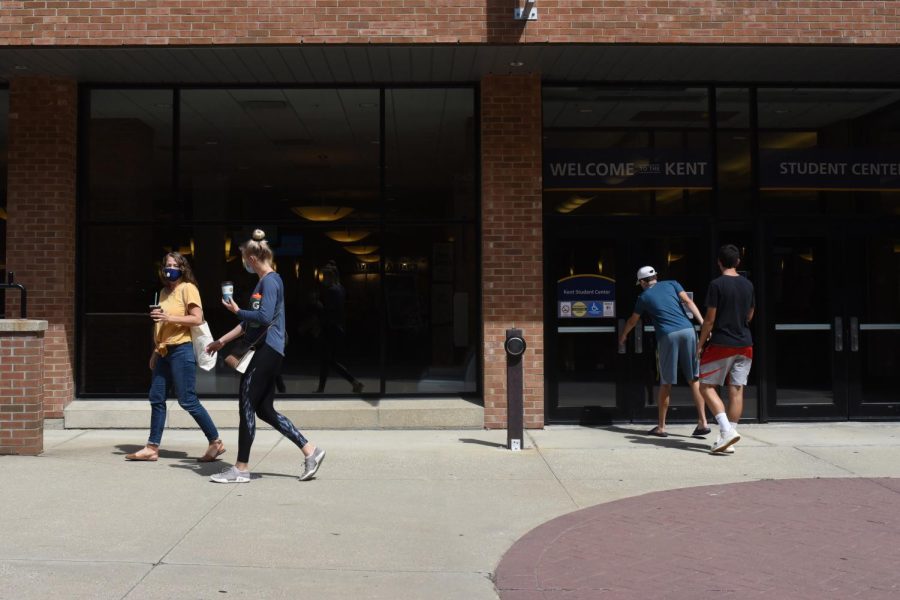OPINION: Perspectives on Biden’s tuition-free plan for college students
February 9, 2021
Kelly Krabill is a senior journalism major with a nonprofit studies minor from Louisville, Ohio. She obtained her previous degrees from the Art Institute of Pittsburgh and Youngstown State University, both in photography. She worked in the healthcare industry for more than 11 years before returning back to college. This is her second semester as an opinion writer and photographer at KentWired. Kelly’s column focuses on education. Her professional goals are to work in a news media nonprofit organization that focuses on the community. She loves spending time with her nieces and nephew, serving at her church and getting together with friends and family. Watching an episode of The Big Bang Theory or This Is Us is a late night treat after studying.
When running for president, Joe Biden adopted Sen. Bernie Sanders’ proposal to make public colleges and universities tuition-free for all students whose family’s income is below $125,000. His plan, “The Biden Plan for Education Beyond High School,” will approximately help eight out of 10 families in America. Since being elected as the 46th president of the United States, Biden has signed 30 executive orders that will improve our country’s economy, combat against the coronavirus, restore equity among all Americans and reduce restrictions for immigrants. His tuition-free plan is still uncertain. But as we are aware, becoming president in 2021 has its challenges and Biden inherited a complex situation.
The question I often ask myself is what life would look like graduating college with zero student loans and a debt-free future? Let’s take a trip back to 1977 where college tuition was another bill Americans could afford. According to the U.S. Bureau of Labor Statistics, prices for college tuition and fees were 1,415 percent higher in 2020 than in 1977, which is a difference of nearly $283,026.81. The average college tuition cost $20,000 in 1977 with a zero-inflation rate, and as of 2020 the average cost for college tuition is $303,026.81 with an inflation rate of 6.53 percent on average between the four decades. By these figures alone, it would only make sense to put a plan in place for students to attend college and accumulate no debt while doing so.
It’s difficult to enter the real world when you have insurmountable debt. I get it. I am a college student building large amounts of debt as well. As a full-time student at Kent State, my mother worked at Revco in the pharmacy department. Between her father’s social security money after he passed away, a few grants she received and the minimum wage she made while working, her college tuition was paid for. She finished school in 1979 and began her future without the stress of making monthly payments to Sallie Mae. Soon after she received her college degree, inflation took over.
Twenty years ago I began my first semester at the Art Institute of Pittsburgh. Art school in Pittsburgh felt as if I entered a big city with cool people expressing themselves in dress as much as they did with their art. There were a few different types of students in the school: metal students, 50 rocker students and goth students wearing black trench coats. Yes, black trench coats were a thing. I didn’t wear one but many of the students studying animation sported them around town.
After two years of earning an associate degree in photography, I was left with student loans and barely a resume to find a job in my field. When I graduated in 2003, the tuition inflation rate was at a high of 8.38 percent. Many of my friends stayed in Pittsburgh after college and currently live there now. I moved back home to Louisville, Ohio and did the reasonable thing to do when you have fresh debt: I moved back into my parents’ house.
Soon after, I got a job working with adults with disabilities and I went back to school the next year at Youngstown State University to finish my Bachelor of Fine Arts degree in photography. Photography is expensive. Cameras. Lenses. Darkroom equipment. Printing costs.
What 23-year-old has money for those items? To put it in perspective, my debt was not high compared to my friends who owed $80,000 but it put my life on hold for a while.
Why am I telling you this? What’s the point of my story? Where would my life be if I didn’t enter adulthood with student loans? I am sure it would look different; however I learned many lessons of working hard to become debt free. And that is priceless. Am I telling you that the Biden administration shouldn’t pay for students’ education? That’s not for me to decide but if it doesn’t happen, you may find a few rare gems called life lessons within the uneven, jagged rocks we call student loans.
Kelly Krabill is an opinion writer. Contact her at [email protected].












